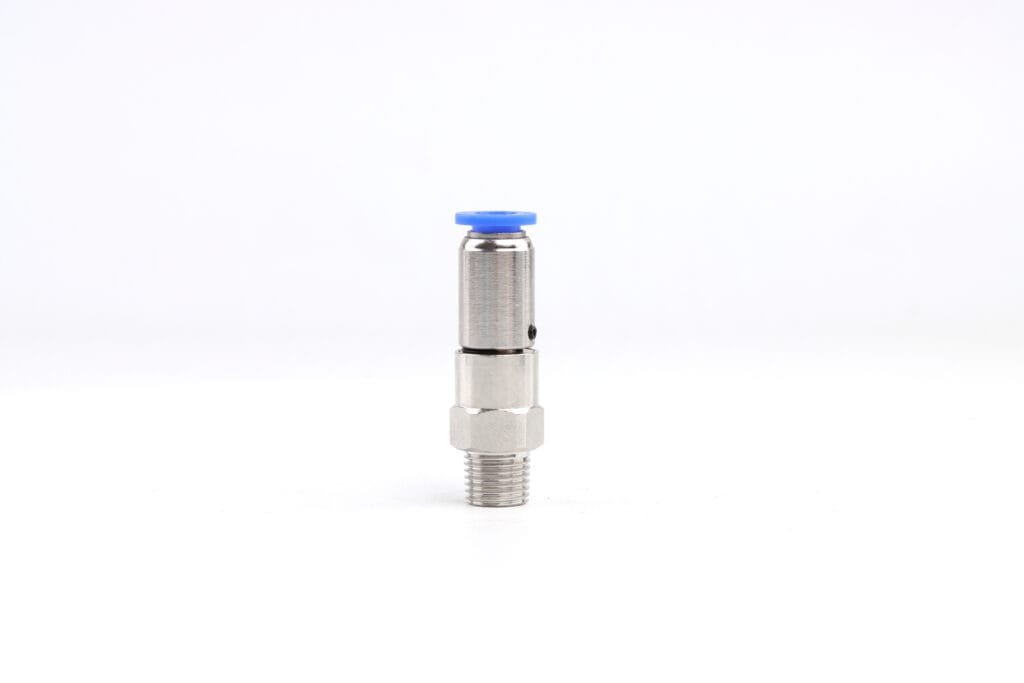what is a Rotary fitting
A rotary fitting is a mechanical device used to transfer fluids between stationary and rotating parts. It allows fluids such as water, oil, gas or steam to flow continuously between the stationary and rotating parts of a system without leakage or pressure loss.
Rotary fitting play a vital role in various industrial applications such as machining, printing, textile, paper, energy and chemical industries.

How does a rotary fitting work?
The basic structure of a rotary fitting consists of a stationary housing and a rotor connected to the rotating part of the equipment. Seals (such as mechanical seals or packing) are used between the housing and the rotor to prevent fluid leakage. When the equipment rotates, the rotor rotates synchronously with the housing, and the seal ensures stable transmission of fluid between the two parts.
The working principle of the rotary fitting is based on the following steps:
- The fluid enters the housing of the rotary fitting from the stationary input port.
- The fluid flows to the rotor through the channel in the housing.
- The rotor guides the fluid to the output port connected to the rotating part of the equipment.
- The seal forms a seal between the housing and the rotor to prevent fluid leakage.
In this way, the rotary fitting achieves continuous transmission of fluid between the stationary and rotating parts while minimizing leakage and pressure loss.

Types of Rotary fitting
Depending on the application requirements, rotary fitting can be divided into the following types:
- Single-channel rotary joint: This is the most basic type of rotary fitting, which contains only one fluid channel. Single-channel rotary fitting are suitable for simple fluid transfer applications, such as the delivery of coolants or lubricants.
- Multi-channel rotary joints: Multi-channel rotary fittings contain two or more independent fluid channels and can transfer multiple fluids at the same time. This type of rotary fitting is often used in complex industrial systems, such as equipment that needs to transfer coolants, hydraulic oils, and gases at the same time.
- Special purpose rotary joints: Rotary fittings designed for specific application requirements, such as rotary fittings used in high temperature and high pressure environments. These rotary fittings use special materials and sealing technologies to ensure reliability and performance under harsh conditions.
Choosing the Right rotary fitting

To ensure optimal performance of a rotary fitting in a specific application, it is critical to select the right type of rotary fitting. Here are the main factors to consider when selecting a rotary fitting:
- Material: The material of the rotary fitting must be compatible with the fluid being conveyed and able to withstand the temperature and pressure of the operating environment. Common materials include stainless steel, aluminum, bronze, and various engineered plastics.
- Pressure and Temperature: The rotary fitting must be able to operate reliably at the operating pressure and temperature of the system. When selecting a rotary fitting, make sure its pressure and temperature ratings meet or exceed the application requirements.
- Fluid Type: Different fluids have different requirements for the materials and seals of the rotary fitting. For example, corrosive fluids may require special materials, while high viscosity fluids may require special seal designs.
By carefully evaluating these factors and working closely with the rotary fitting supplier, it is possible to select the rotary fitting that best suits the needs of a specific application.
What is the use of the rotary fitting
Rotary joints are an indispensable key component in modern industry and are widely used in various rotating equipment and systems.
The following are some of the main applications of rotary fitting:
- Manufacturing: In machining, printing, textile and paper industries, rotary fitting are used to transfer coolants, lubricants, inks and steam to rotating equipment such as spindles, rollers and drums.
- Energy: Rotary fitting are used to transfer hydraulic oil, coolants and electricity in wind turbines and solar tracking systems.
- Chemical: In chemical reactors and mixing equipment,rotary fitting are used to transfer raw materials, catalysts and heat transfer fluids.
Rotary fittings play an important role in various industrial fields, improving production efficiency and equipment reliability.
By understanding the working principle, types and applications of rotary fittings, engineers and maintenance personnel can choose the rotary fitting that best suits their specific needs and ensure its optimal performance in the production process.

